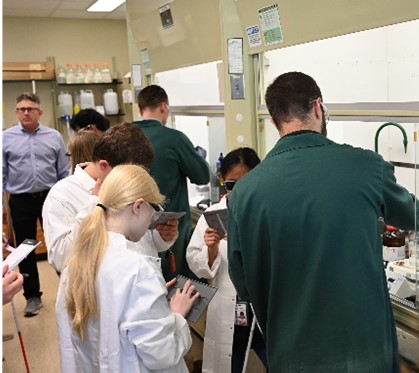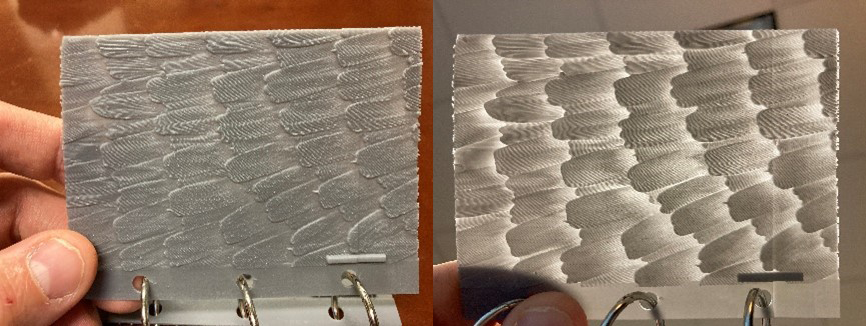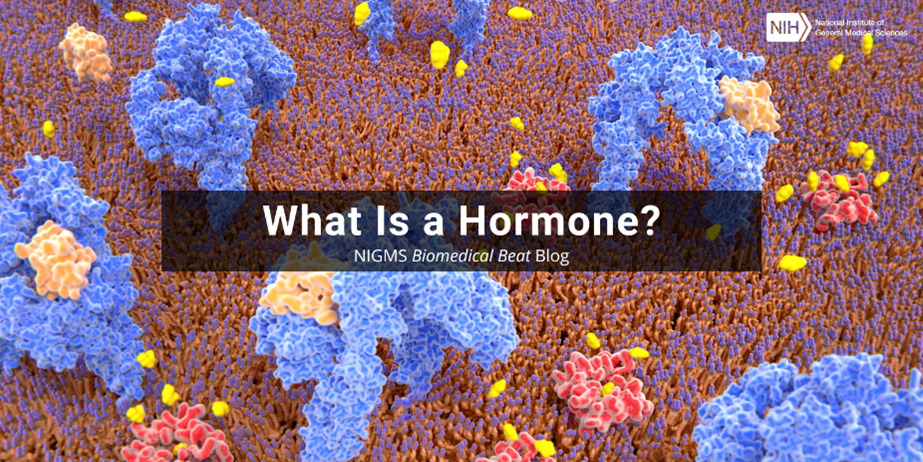
Students with blindness and low vision are often excluded from chemistry labs and offered few accessible representations of the subject’s imagery, which can significantly hinder their ability to learn about and participate in chemistry. Bryan Shaw, Ph.D., a professor of chemistry and biochemistry at Baylor University in Waco, Texas, hopes to change that through a program funded by an NIGMS Science Education Partnership Award (SEPA). His inspiration to start the program came from his son, who is visually impaired due to childhood eye cancer, and his son’s friends who have also experienced partial or complete vision loss.
“Chemistry focuses on dreaming up assistive technologies to help us visualize particles and structures too small to see with our eyes. The field is actually well equipped to make itself accessible because all it’s ever been is trying to understand things we can’t see,” Dr. Shaw says.
Experiencing Chemistry Firsthand
The SEPA program, which is a collaboration between Baylor and the Texas School for the Blind and Visually Impaired (TSBVI), has created 3-day research experiences for high schoolers with blindness and low vision. The first research experience, held in October 2022, was split into two parts. In the first, Dr. Shaw, three of his graduate students, and three chemists with blindness who serve as mentors (Matthew Guberman-Pfeffer, Ph.D.; Mona Minkara, Ph.D., also a program co-leader; and Hoby Wedler, Ph.D.), traveled to the TSBVI to give eight students a chemistry lesson. They brought a wide range of finely detailed tactile graphics that enabled students to explore scientific imagery and better understand how electron microscopes work.
From Visual to Tactile
To create high-quality tactile graphics, Dr. Shaw and other researchers replicated an ancient art form called lithophane using 3D printing. Lithophanes are thin engravings on translucent materials. All the details in a lithophane can be felt, and they’re also revealed visually when backlit—enabling both people with visual impairments and those without to take full advantage of the medium. To make lithophanes efficiently and accurately, the researchers used free online software to convert 2D images to 3D blueprints, and then used a 3D printer to fabricate the final products. Lithophanes can be used to present microscopy images, molecular structures, equipment diagrams, graphs, and more.

For the second part of the experience, Dr. Shaw and his team brought the students to Baylor for 2 days. The team trained the students in lab safety and provided them with lab coats, safety goggles, gloves, and Bluetooth glasses that transmitted audio input from various devices. Then, they took the students on a tour of Dr. Shaw’s lab, including an area adapted for use by an undergraduate researcher with blindness. Other activities included:
- A lesson on electron microscopy, during which students felt the parts of the microscope and interacted with tactile versions of images it produced
- A demonstration of synthesizing five chemical compounds that contribute to the scents of butterscotch, banana, pear, pineapple, and wintergreen
- An opportunity to learn about the structures of common proteins through grape-sized 3D models
- An introduction to a robot that can assist with weighing reagents and carrying out chemical reactions
- A tour of Baylor’s campus
Throughout the entire experience, the mentors talked with and encouraged students. “At the start, the students were somewhat skeptical, but within the first day of the program, they were excited and wanted to learn more science. Their attitudes changed so much because they had accessible materials,” says Dr. Minkara, who was frequently discouraged from pursuing science throughout her own life because of her blindness. “Even I learned new things. For instance, I never knew what an electron microscope looked like until this program. It’s phenomenal to be part of this.”

Building a Bright Future
Moving forward, this SEPA project plans to host at least one research experience each semester. Dr. Shaw hopes that the students from the first experience will return for a second, where they will, among other things, learn about polymers and test out the lab robot. They’ll also each get to choose an object for the electron microscope to image, and then they’ll receive tactile graphics of the resulting pictures. He also plans to give new students the opportunity to participate in the activities of the first research experience.
“My ultimate goal is that, because of our work, a student with blindness is inspired to become a scientist and makes discoveries that change the world,” says Dr. Shaw. “I also hope that educators all over the country, and eventually the world, start seeing how easy it is with modern technology to make scientific imagery and labs accessible to people with visual impairments.”
The Baylor SEPA program is funded by NIGMS grant R25GM146265.








The program’s goal is to encourage young blind people to enter STEM fields, but I think all they really did was attract positive publicity. It’s completely unrealistic to suggest blind students enter fields in science, when little support for their education exists.
The blind students in the Texas experiment had the benefit of professional presenters, tactile graphics and one-on-one instruction.
At the community college where I work, for the past twenty years, we have attempted to get our science department to offer at least one course that was fully accessible to blind and visually impaired students, and have not been successful. To transfer to university, students are often required to pass two science courses at the freshman or sophomore level. And all colleges in California require at least one course with a science-based lab component in order to graduate. So even if your major is history or philosophy, STEM is required.
When our blind students take anthropology, biology, geology, chemistry, physics, meteorology or any of our other science courses, we in disabled students’ services struggle. We must produce the textbook in an accessible format. We must scramble to locate tutors and/or lab assistants. We need to crank out tactile graphics on the fly. We have to encourage the professor, who often doesn’t want a blind student in his class and stubbornly refuses to make anything more accessible. Due to academic freedom, professors can use any textbook and class handouts they choose, so it’s not like we can develop accessibility to a specific curriculum and avoid re-inventing the wheel! It’s a big hassle and it repeats each time we get a new blind student.
A far better use of their grant funds would have been to produce an online course, in an open-source format that was fully accessible and that met the science requirements for graduation.
If someone gets grants to produce open-source fully accessible courses that all colleges can use, this would go a long way towards preparing all blind students, whether they wish to enter a science-based field or simply need to get their literature B.A.!
Thanks for your comment and perspective, Deborah. We agree that accessibility is a systemic issue that needs to be more widely addressed. The SEPA project at Baylor is one effort toward creating access for students with blindness. If you or someone you know is interested in developing an accessible course like you mentioned, our Innovative Programs to Enhance Research Training (IPERT) program supports the development of innovative educational activities and would be a great place to start.